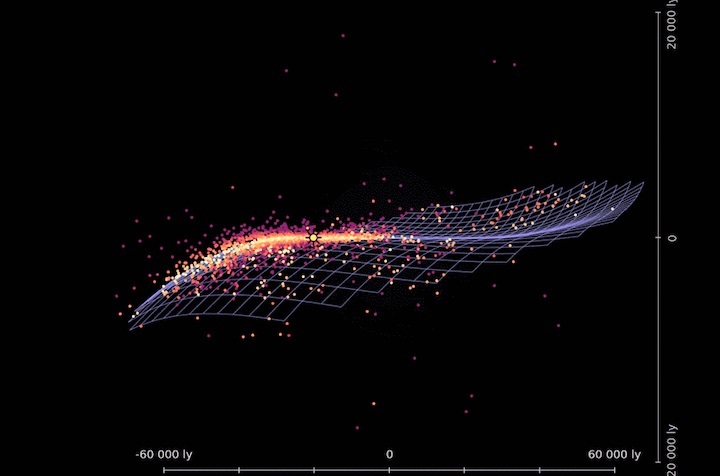2.08.2019

The twisted form of the Milky Way has been revealed in three dimensions, thanks to a map of bright, young pulsating stars.
The map is the most detailed yet to be made of the galaxy using only direct distances to individual stars. The best maps of the Milky Way so far have used indirect measures — based on observations of gas or stars in a given direction and structures seen in other galaxies. The latest chart was published in Science on 2 August1.
A team at the University of Warsaw measured the positions and distances of supergiant stars known as Cepheids, using the Optical Gravitational Lensing Experiment telescope at Las Campanas Observatory in Chile — a project that has doubled the number of known Cepheids in the Milky Way. Mapping the distances traces the Milky Way’s spiral arms, and how the disk warps at its farthest reaches, to form an S-shape when seen side-on.
The researchers studied 2,431 Cepheids over six years. To measure the distances to the stars — which can be up to 100,000 times brighter than the Sun — the team timed how quickly they pulse in size and temperature. The slower a star pulses the brighter it is, a relationship that can be used to calculate a star’s true brightness. This can be compared against their apparent brightness levels, as measured from Earth, to reveal their distance.
Features of the 3D plot could also help astronomers to understand how the Milky Way evolved. The map, for example, shows that stars of a similar age are clustered in narrow arcs. By comparing these observations against a simulation, the team concluded that such clustering could be explained if groups of stars that formed at around the same time and place became smeared out over time because their speed of rotation around the galactic centre differs from that of the spiral arms.
Quelle: nature

